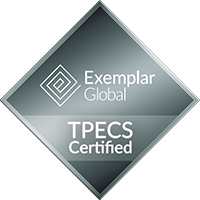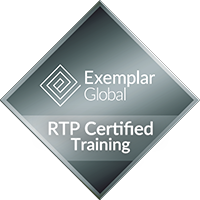| Approx Course Duration *: | Equivalent to Approx. 1hr |
| Access to Course Content: | 18 Months from the date of enrolment |
| Qualification/s: | Assessing NDIS Audit Findings |
| CPD Hours: | 1 Continuing Professional Development Hours |
Assessing NDIS Audit Findings
What separates a good audit from a great one is the ability to make sound, balanced judgments based on what’s been observed. This course supports auditors in interpreting audit evidence, identifying nonconformities, and drawing fair, consistent conclusions grounded in the NDIS Practice Standards.
You'll learn how to assess the significance of what you find during an audit, how to weigh the risk of harm, and how to determine the right course of action—without over- or under-reacting. It's about looking beyond surface-level gaps and identifying what really matters to participant outcomes and provider obligations.
This microcredential builds the analytical and professional communication skills required to assess audit findings clearly and constructively—so your work doesn’t just satisfy compliance but supports real improvement.
Who This Course Is For
Ideal for:
- Auditors developing confidence in interpreting NDIS audit evidence
- Lead auditors reviewing or validating the findings of audit teams
- ISO auditors transitioning into disability and person-centred assessment work
- Sector consultants or managers supporting audit outcomes and improvement planning
- Anyone seeking to align audit decision-making with NDIS values, standards, and risk context
Why Take This Course?
Because seeing something is only the beginning—understanding its impact is what makes your findings meaningful.
This course guides you through the thinking process behind audit judgments: How serious is this issue? What is the likelihood of harm? What level of evidence is enough? It also equips you with the language to frame those findings in a way that is respectful, clear, and grounded in the Standards.
It’s not just about identifying problems—it’s about making sure your assessments support safer, more inclusive services.
Make Your Audit Findings Count
Whether you're writing up your first audit report or reviewing findings as a lead auditor, this course helps you bring confidence, consistency, and care to how you assess NDIS compliance.
A stackable, certified microcredential for auditors finalising and reporting NDIS audit outcomes.
Why this microcredential matters: Assessing audit findings is a critical stage in the NDIS audit process. This course equips you to analyse evidence, classify nonconformities, prepare recommendations, and draft reports that support providers in making meaningful improvements. You’ll also learn how to provide feedback to Approved Quality Auditors (AQAs) and the NDIS Quality and Safeguards Commission.
This microcredential contains the following lessons, with a knowledge check and a short-format exam upon completion.
| Lesson Topic | Focus Area | Key Takeaways |
|---|---|---|
| Develop & Discuss Preliminary Findings | Stakeholder Communication | Share preliminary findings with providers and audit teams; avoid “surprises” at closing meetings. |
| Source Additional Data | Clarifying Evidence | Identify when extra evidence is needed and integrate reliable sources into the audit record. |
| Prepare Recommendations | Corrective Actions | Develop clear, actionable recommendations to address nonconformities. |
| Draft Audit Report | Findings & Outcomes | Produce a structured report summarising outcomes, findings, and required actions. |
| Edit, Proofread & Obtain Feedback | Report Refinement | Refine the draft report and incorporate feedback for accuracy and clarity. |
| Provide Feedback to AQA/NDIS Commission | Regulatory Communication | Deliver findings and feedback to regulatory bodies to support compliance monitoring. |
Course details:
-
Microcredential
-
Approx 1 hours full-time study*
-
Digital Microcredential
-
No prerequisites required
* All ATOL courses are delivered in such a way you can work through them at your own pace, the actual time to complete the training may change depending on the individual learners' experience and/or learning style


















 NO PREREQUISITES
NO PREREQUISITES